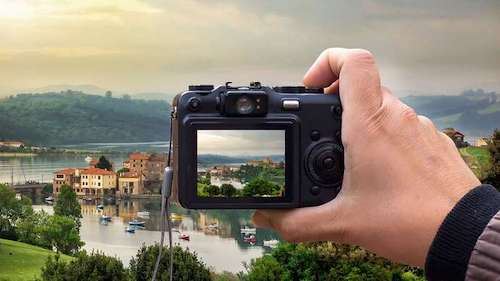The following is a Plus Edition article written by and copyright by Dick Eastman.

When going through a box of old photographs or viewing the latest digital pictures on your computer, did you ever ask, “I wonder where this photograph was taken?” You can use software tools to record the exact location of every digital picture in your collection. This includes old family photographs that you have scanned as well as new pictures that you or someone else takes with a digital camera.
None of the products I will mention will do the detective work for you. You must still find where the picture was taken in the traditional manner. For instance, "Here is Aunt Millie and Uncle Fred at Niagara Falls" or something similar. You then scan the photograph, saving it as a JPEG image. Once the photograph is on your hard drive, you use a Windows or Macintosh program or an online app “in the cloud” to embed the longitude and latitude information into the photograph in a hidden area of the image. Once the information is recorded, you and future viewers of the image will wonder no more. Even better, with the appropriate software, you can just click on an icon to display a map that shows the exact location.
Even better, pictures taken with iPhones and most Android phones already have the longitude and latitude information embedded into the photograph.
The added information is not visible when looking at the image but can be read by any software that looks for EXIF information. There are several EXIF programs available today, and new ones appear frequently.
Metadata in photography is information that describes the image files. Photography metadata typically is not visible when looking at the photograph. However, using a program that is capable of reading metadata, the information displayed typically includes information on the data and time the picture was taken. Certain metadata entries are generated automatically by modern cameras. Lens aperture, focal length, camera shutter speed, ISO sensitivity, whether flash was used or not – all this information is also metadata. Every modern digital camera embeds this sort of information to each image individually and by default. However, other metadata entries – those that describe the image – may also be manually added later, if desired. All that is needed is a piece of software that can read and write this meta data.
The remainder of this article is reserved for Plus Edition subscribers only. If you have a Plus Edition subscription, you may read the full article at: https://eogn.com/(*)-Plus-Edition-News-Articles/10453424.
If you are not yet a Plus Edition subscriber, you can learn more about such subscriptions and even upgrade to a Plus Edition subscription immediately at https://eogn.com/page-18077.